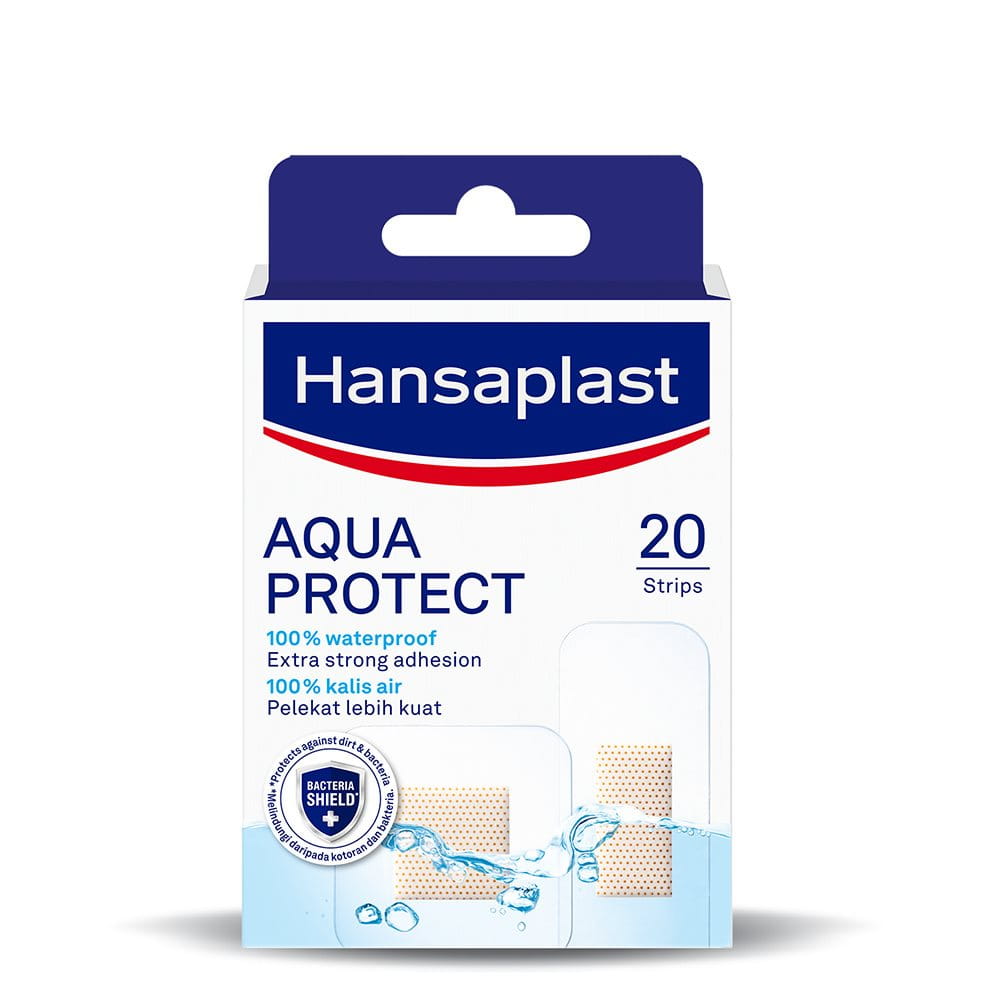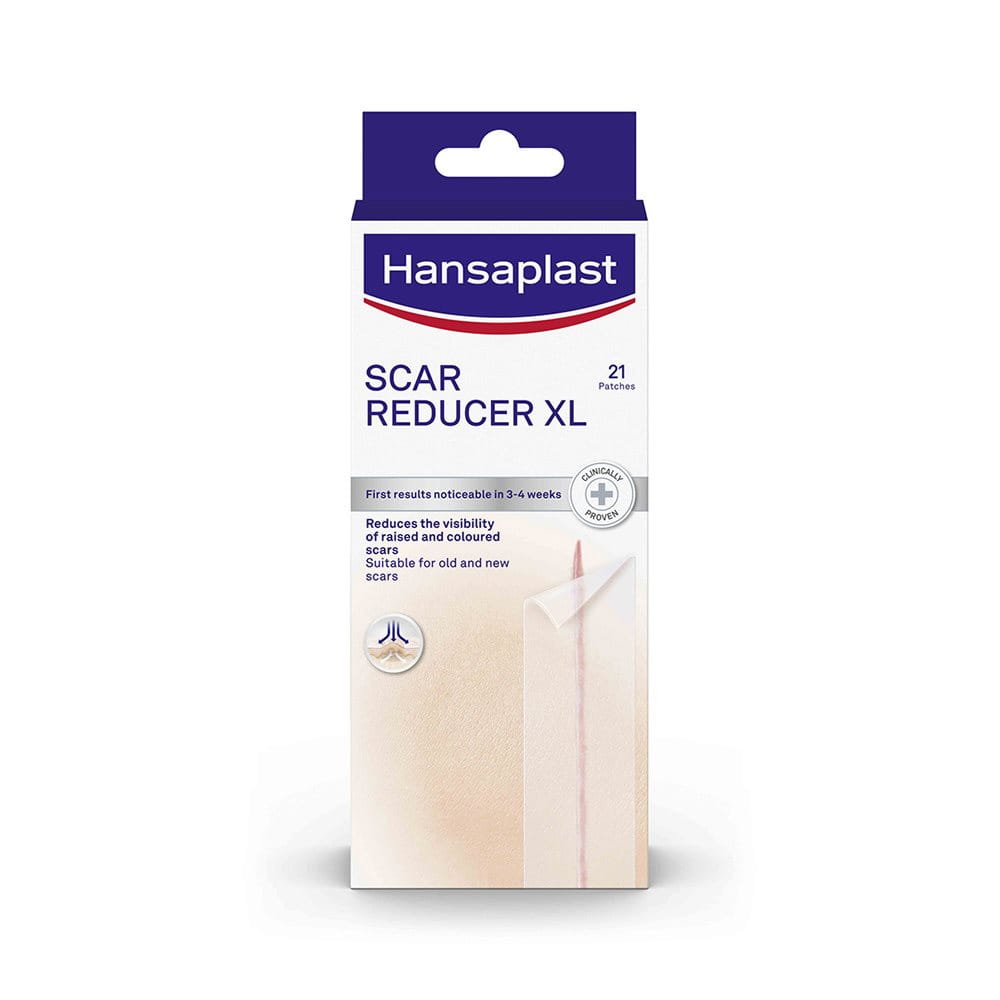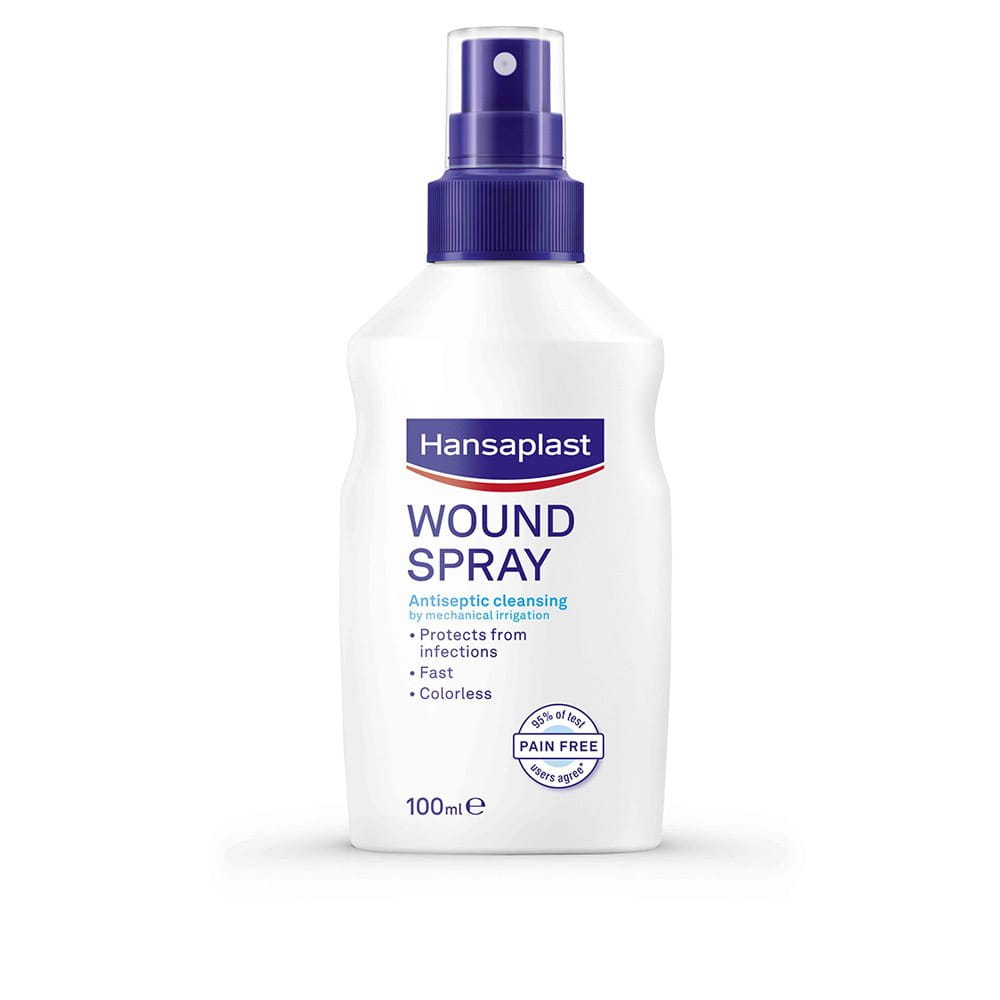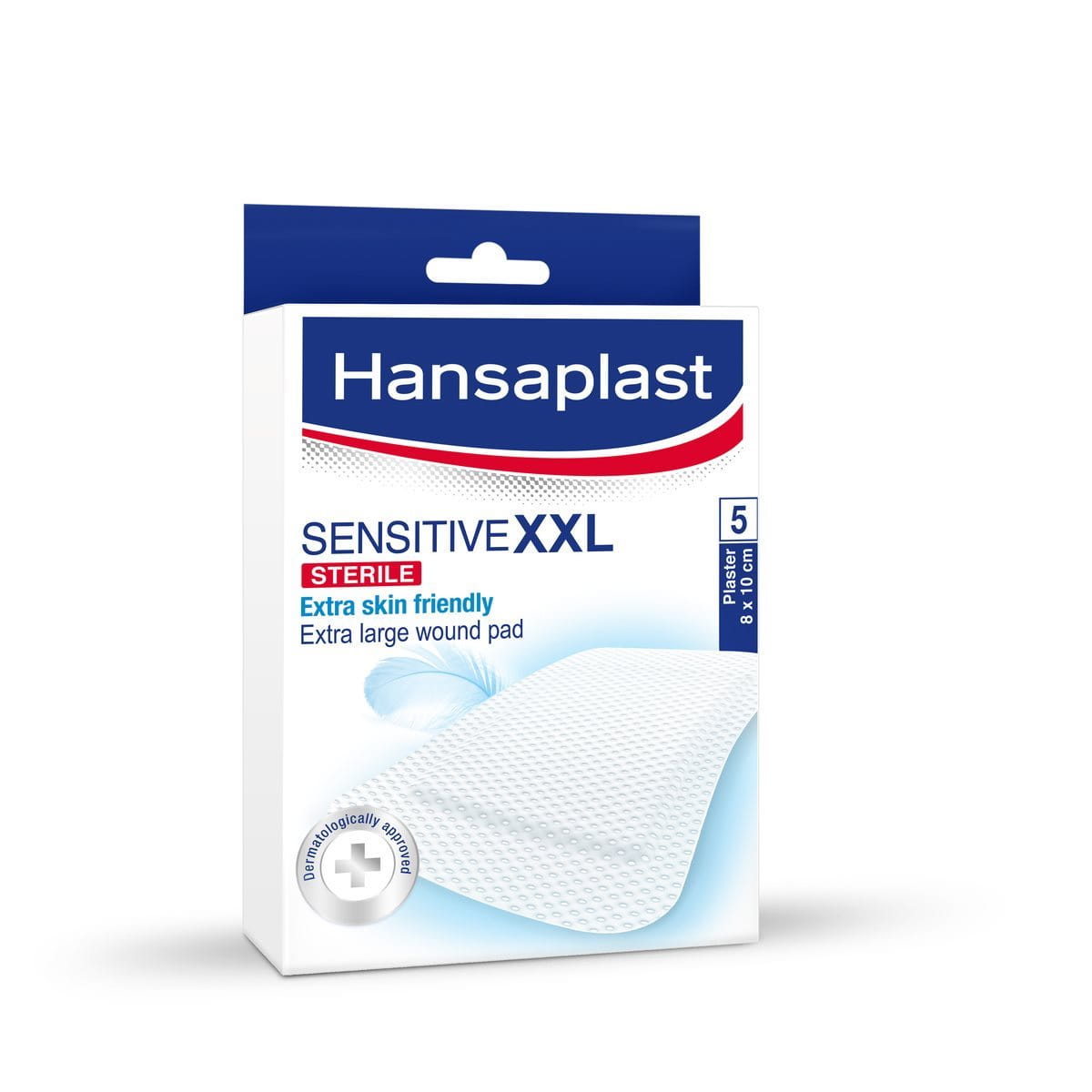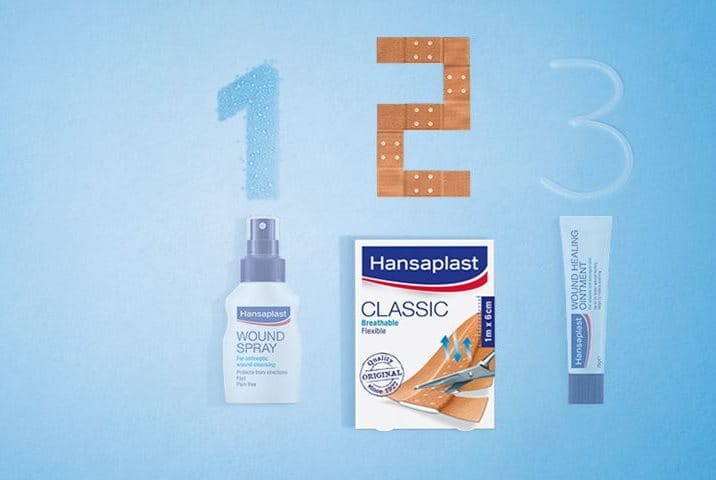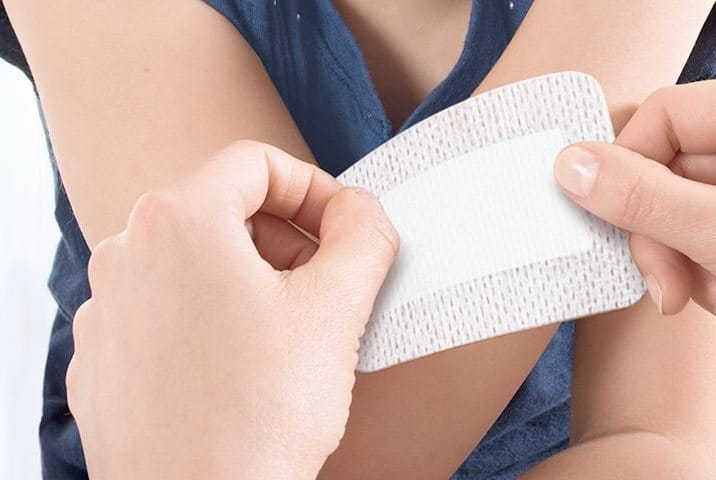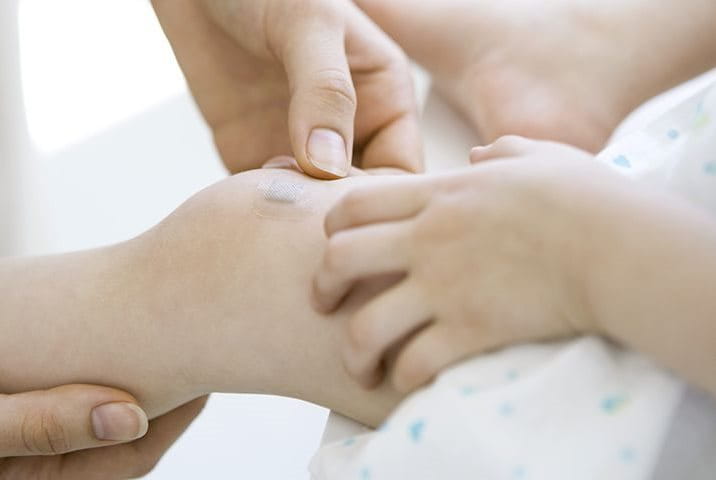Surgical wound conditions
Treat surgical wounds in 3 steps
How long is the healing process?
Surgical wound infection
As with any type of wound, it is important to keep an eye on healing progress and watch for signs of wound infection after surgery. Contact your doctor immediately if you experience excessive redness or swelling around the wound or sutures, unpleasant smell or discharge, or if you feel warmth. While you may experience some post-operative pain following a procedure, these symptoms or additional pain could indicate an infection. Use Hansaplast Antibacterial plasters to protect the wound and prevent infections thanks to the Silver Technology.
Surgical wounds and scars

Scarring can occur at the end of the healing process of injuries that affect the epidermis and underlying dermis because the organism is not able to replace the destroyed, highly specialised tissue in the same way. Instead, the tissue is repaired by large amounts of newly produced collagen. To help reduce scarring, follow these simple tips:
Your doctor will advise you on how to treat your surgical wound depending on your situation. Learn more here about scar formation, how to prevent new scars from forming or how to treat existing ones.
